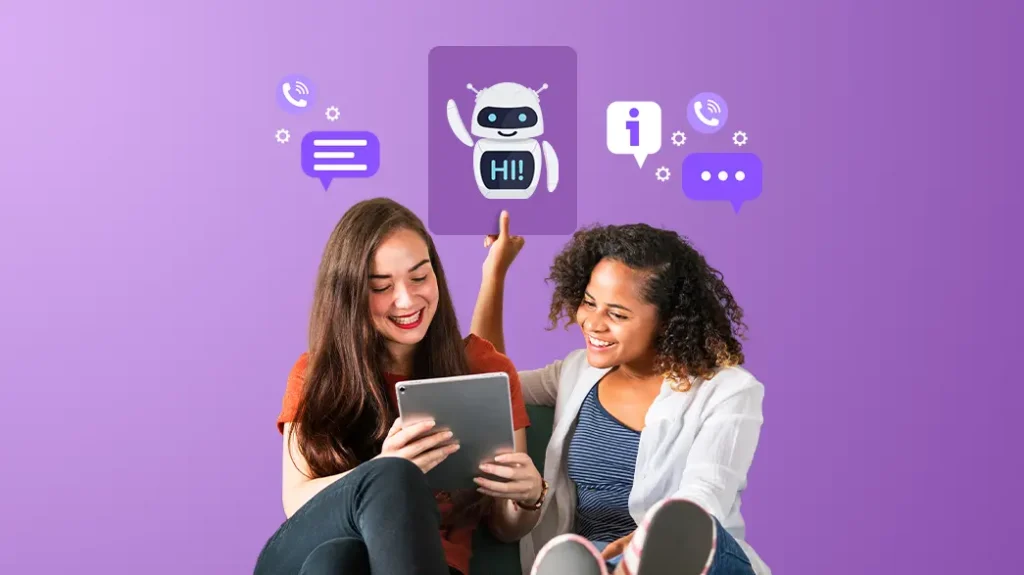The Silent Revolution: How AI is Transforming Everyday Digital Interactions


Artificial Intelligence (AI) has become an integral part of our daily lives, revolutionizing the way we interact with digital platforms. Unlike the sensationalized depictions of AI taking over the world, the real AI revolution is quieter and more seamless, aiming to improve and enhance our everyday digital interactions.
The Rise of AI in Digital Platforms
In recent years, businesses across various sectors have started integrating AI into their platforms to elevate user experiences. From personalized shopping suggestions on e-commerce sites to intelligent email spam filters, AI’s influence is far-reaching. The adaptability and learning capabilities of AI make it an ideal solution for handling the diverse needs of digital users.
As consumers increasingly expect instantaneous, personalized experiences, AI solutions are stepping up to deliver. By analyzing vast amounts of data in real-time, AI systems can understand and predict user behavior, ensuring that digital interactions are smooth and relevant.
Enhancing User Experience with Personalization
AI’s power to analyze and interpret data at scale has paved the way for highly personalized digital interactions. Streaming services like Netflix and Spotify leverage AI algorithms to curate content recommendations based on an individual’s preferences and viewing history. This kind of personalization not only enhances the user experience but also increases engagement and user satisfaction.
E-commerce platforms benefit significantly from AI’s personalization capabilities as well. Websites like Amazon employ AI to provide tailored product suggestions, which help users discover items they might not have found otherwise. By understanding user preferences, these platforms can ensure that they stay ahead of the competition and retain customer loyalty.
Revolutionizing Customer Support
AI has transformed customer support, making it more efficient and accessible. Chatbots powered by AI are now common in customer service settings, providing immediate assistance and handling routine inquiries. These virtual assistants are available 24/7, offering support when a human agent is unavailable, and significantly reducing wait times.
Moreover, AI-driven tools can understand natural language, enabling them to resolve complex queries effectively. As a result, human agents can focus on more challenging issues, improving the overall efficiency and effectiveness of customer support teams.
AI in Social Media Interactions
Social media platforms leverage AI to enhance user interactions while ensuring a safe environment. AI algorithms can detect harmful content, such as hate speech and misinformation, and either flag it for review or remove it entirely. This proactive approach fosters a safer community atmosphere and encourages positive interactions among users.
Additionally, AI is crucial in managing vast amounts of content generated on social media platforms. From tailoring news feeds to identifying trends and patterns, AI plays a vital role in ensuring that users see content that is most relevant to them.

Voice Assistants: AI in Everyday Life
Voice assistants like Amazon’s Alexa, Google Assistant, and Apple’s Siri are perhaps the most direct way AI interacts with users daily. These tools have become household staples, performing tasks ranging from setting reminders to controlling smart home devices. The intelligent voice recognition and natural language processing capabilities allow these assistants to understand and respond to user commands seamlessly.
As voice recognition technology continues to evolve, so does its ability to deliver more accurate and context-aware interactions. This ongoing development ensures that voice assistants will continue to expand their functionality and integrate further into daily digital activities.
AI-Driven Visual and Text Content Creation
AI is breaking new ground in content creation by developing tools that can generate written and visual content autonomously. Platforms like OpenAI’s GPT can create coherent articles and creative pieces by analyzing existing text data. Similarly, AI-driven design tools allow users to generate visual content with minimal input, democratizing digital design.
These developments are particularly beneficial for marketers and content creators who need to produce high-quality content at scale. AI-driven content tools can improve productivity and ensure that content is both relevant and engaging for target audiences.
The Future of AI in Digital Interactions
The AI revolution in digital interactions is just beginning. Future advancements could mean even more personalized and seamless experiences. As AI continues to learn and adapt, the potential applications are limitless. Future developments may include even more sophisticated virtual assistants capable of anticipating user needs and more proactive customer support solutions that can predict and resolve issues before they arise.
Furthermore, as AI becomes more integrally woven into digital fabrics, ethical considerations around data privacy and AI autonomously making decisions will become increasingly important. Ensuring that AI technologies are developed and deployed responsibly will be crucial for maintaining user trust and safety.
Conclusion
AI is silently revolutionizing the digital landscape, improving and transforming everyday interactions across various platforms. Through personalization, enhanced customer support, innovation in content creation, and more, AI’s transformative power can be seen and felt daily. As this technology continues its rapid evolution, it is imperative for businesses and consumers alike to stay informed about AI’s capabilities and potential impacts on their digital lives.
The silent revolution of AI is not an abstract future concept but a present-day reality, reshaping how we interact with technology and each other. As AI continues to evolve and integrate further into our digital lifestyle, embracing its potential can lead us to more efficient, personalized, and enjoyable digital experiences.








